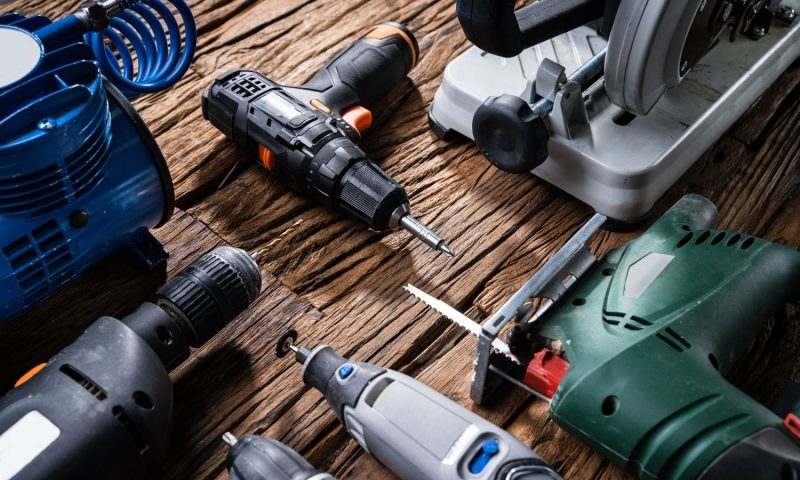Homeowners rely on power tools for home and yard maintenance. It’s important to know when to repair or replace your power tools for safety and performance.
Home maintenance and improvement projects often involve power tools. These hardworking helpers are durable, but they don’t last forever. These telltale signs will help you know when to repair or replace power tools.
Declining Performance
There’s a reason tool-makers keep upgrading batteries and bringing out new series of more advanced tools. Your old power tools might have been chugging along just fine on their older batteries. But when you notice a decline in performance, it could be that the battery—even if it still shows it has charged fully—is coming to the end of its useful life. Alternatively, the battery may be just fine, but the tool has seen so much use that its internal parts are wearing out.
Two general rules of thumb can help you decide if it’s time to replace your power tool. First, take your tool to a repair shop on the manufacturer’s list of authorized service providers for a diagnosis and an estimate. The 50% rule states that if the repair would cost half or more of the replacement cost, then it’s time to buy a new tool. Another rule says that it’s time to replace the tool if newer models have come out within the past five years. The newer designs are likely to be more efficient and more powerful, requiring less effort on the part of the user.
Visible Flaws
If your power tool looks too beat up to use, it’s probably too worn-out to operate safely. This is especially true of frayed power cords for corded tools. Cords get damaged when users improperly drag or carry tools by the cord or when careless users accidentally slice them with another tool. Never use a power tool with a cut, worn, or frayed cord or one that has been wrapped with electrical tape to hide such flaws. Fortunately, replacing the power cord is one of the easier fixes.
With dangerous tools such as chain saws or nail guns, safety should be the top concern. If the tool won’t switch on or if it operates sporadically or unpredictably, stop using it immediately until you can discover what’s causing the problem. Rusty blades or damaged handles also clearly indicate that a major overhaul or replacement is due. Maintaining power tools correctly by cleaning the tool after each use and keeping blades sharp and parts lubricated according to the manufacturer’s instructions will prolong the life of your tools.
Noise, Sparks, or Smoke
Many power tools are noisy by nature. However, if you notice a new sound such as screeching or grinding, something’s wrong. Never use a power tool that’s throwing sparks or generating smoke or a bad smell. Turn it off immediately, let it cool down, and take it to the shop to see what could be causing the tool to misbehave. It might just be a bit of debris that got wedged in the wrong place, but it could also be a sign of serious malfunction.
Temperature Damage
Power tools have a range of temperatures in which they can operate efficiently. Follow the manufacturer’s instructions about how to store your tools, and keep them from extreme conditions or sudden fluctuations in temperature.
Unless you’re an expert, don’t try repairing a power tool on your own. It could void any remaining warranty, permanently damage the tool, or cause injury.
